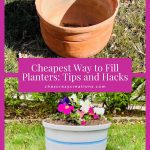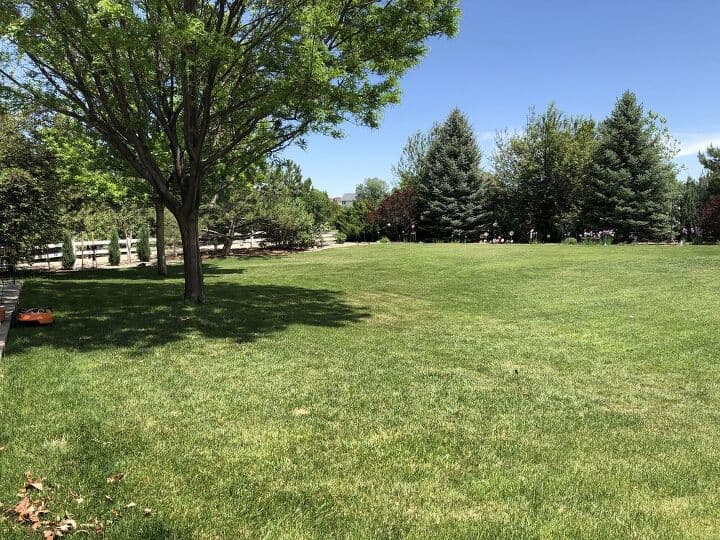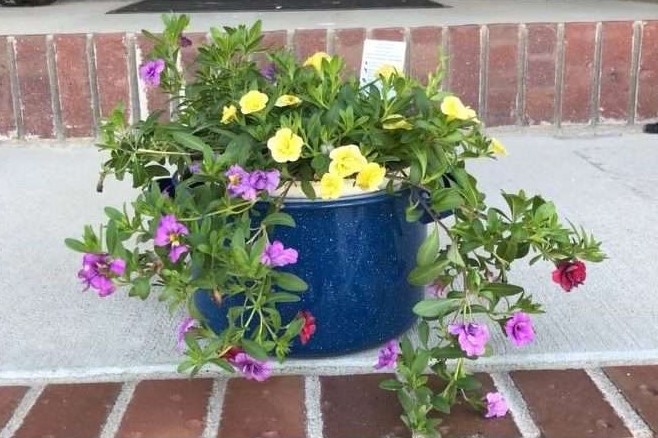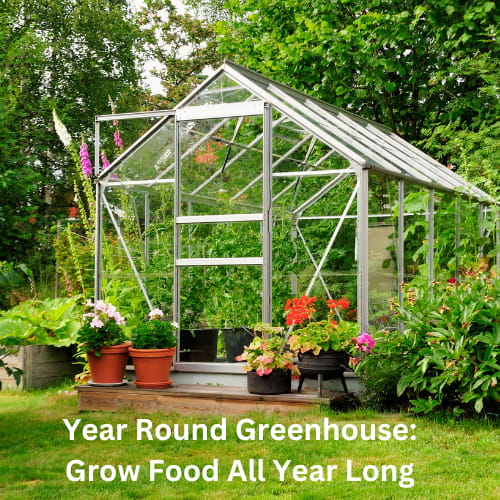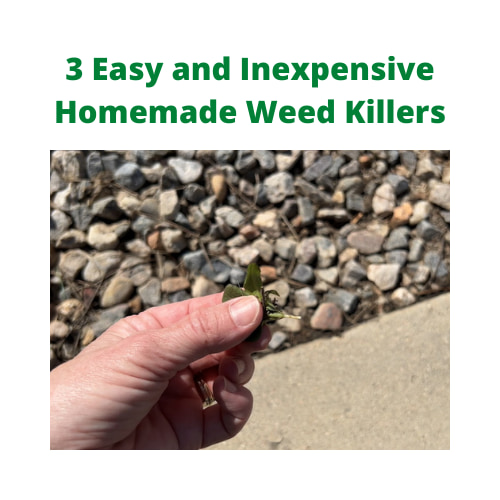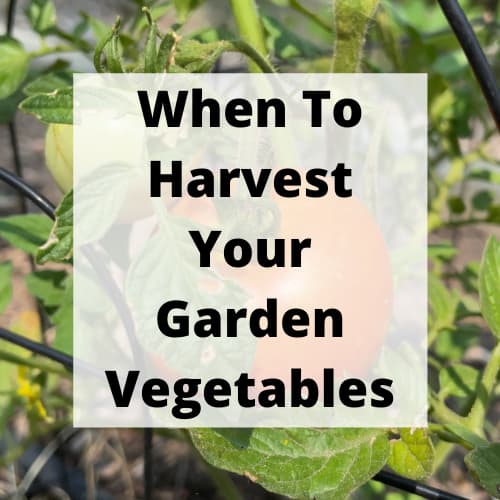Cheapest Way to Fill Planters: Tips and Hacks
Are you looking for the cheapest way to fill planters? Need to fill a large planter fast? Are you tired of spending a fortune on dirt and other fillers for your planters? Well, we have good news for you! You don’t have to break the bank to fill your planters. In fact, there are many inexpensive and creative ways to fill up the bottom of a large planter while still providing the necessary nutrients and drainage for your plants.
This post may contain affiliate links, I earn from qualifying purchases at no extra cost to you. Click here for my disclosure policy
In this tutorial, we’ll show you how to fill your planters using a pool noodle, among other things, to save you both time and money. The best part is you won’t have a heavy planter, and will be able to move it much easier with some of these options.
You might also enjoy some of the following supportive articles:
- Easy DIY Flower Gardening for Beginners with Video
- Vegetable Garden 101 A Fabulous Journey From Start To Finish
- 11 Thrift Store Finds For Unique Planters
- Gardening Hacks for a Thriving Garden

Cheapest Way To Fill Planters Materials
Cheapest Way To Fill Planters Video

Cheapest Way To Fill Planters Instructions
Step 1: Spray Paint
The first step in updating your planter is to spray paint it. Use Rust-Oleum Cement Spray Paint to give your planter a modern look. Once you have spray painted the entire outside of the flower pot, cover the top rim and a little bit of the inside too. Wait until it is completely dry.
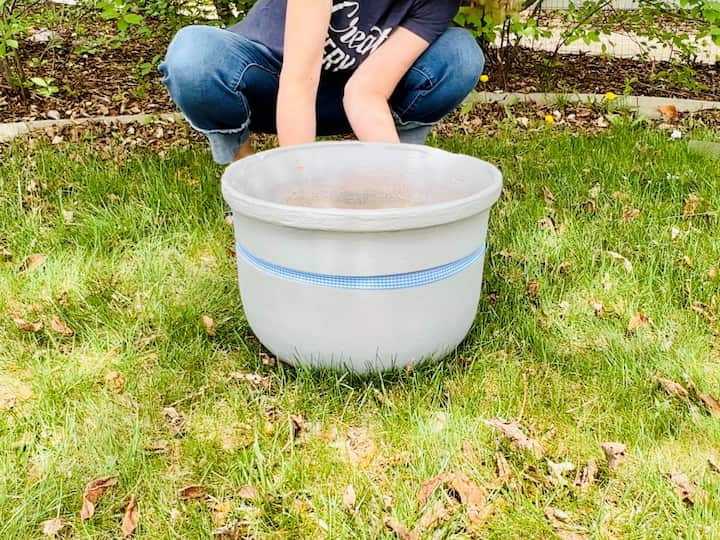
Step 2: Add Ribbon
Next, add some ribbon to the outside of the planter. Tie it around the little groove on the outside to give it a decorative touch.
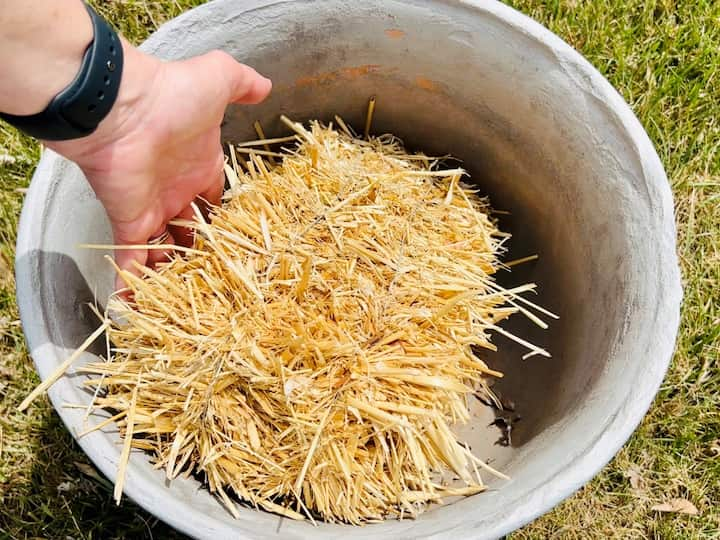



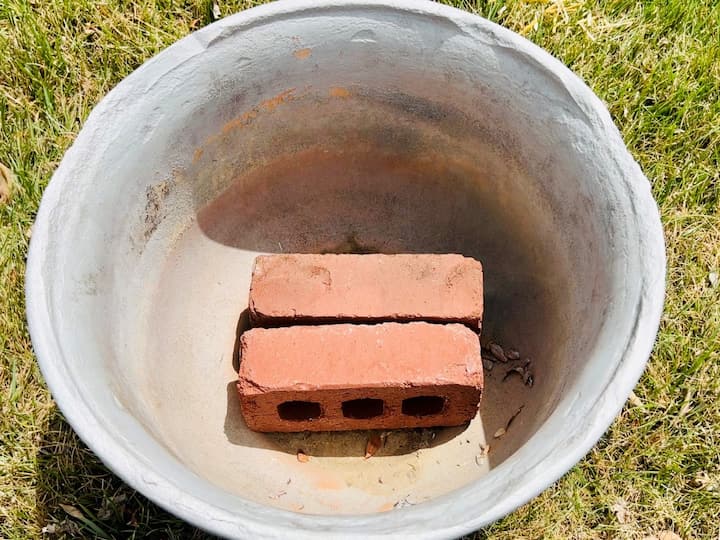

Step 3: Choose Your Filler
Instead of filling your flower pot up with dirt, there are many options for cheap fillers that can also help with drainage. Some of these include:
- Hay or straw
- Pine cones
- Sticks or branches from your yard
- Mulch (wood chips) or leaves
- Old paper, phone books, or magazines
- Bricks or rocks
- Recyclable items like old liter bottles or cans
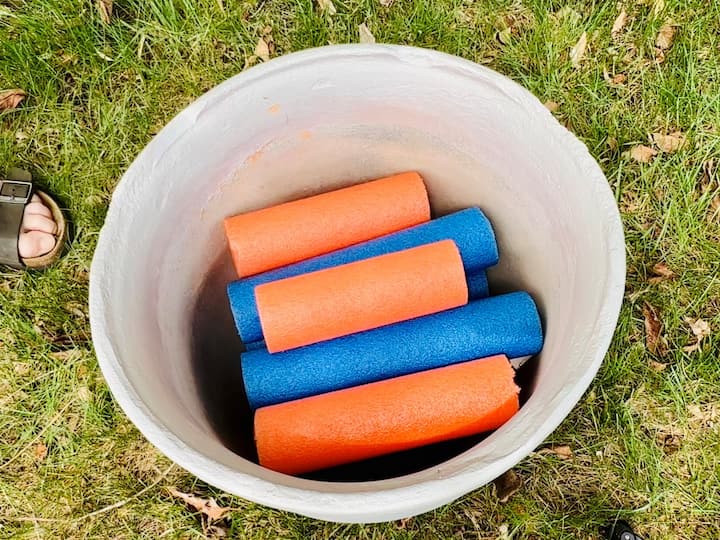
Step 4: Use Pool Noodles
One of the best hacks for filling planters is using pool noodles. Start by cutting them into small chunks with a serrated knife. The amount you’ll need depends on how big your flower pot is. Add the pool noodles to the flower pot vertically or horizontally, depending on how you want them to look. Play around with them until you get the shape you’re looking for.
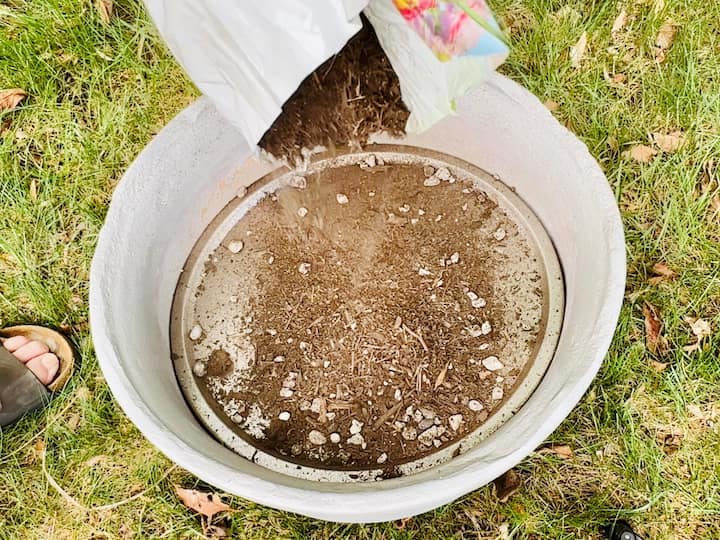
Step 5: Add Pizza Pan
Place a pizza pan on top of the pool noodles, then add some dirt on top of that. This will allow water to drain around the outside edges of the pizza pan and down through the flower pot.


Step 6: Plant Your Flowers
Now it’s time to add your flowers to the planter. You can either place a flower pot into the other flower pot, or remove it from the pot and plant it directly into your planter. Either way, you’ll save money on dirt and other fillers.

Step 7: Enjoy!
Your planter is now complete! You’ll love how it turned out, and you’ll be happy to know that you saved money in the process. Feel free to experiment with different fillers and decorations to create unique and beautiful planters.

Cheapest Way To Fill Planters Video
Shop any of these stores and I receive a small commission at no cost to you.
 Veradek V-Resin Indoor/Outd...Shop on Amazon
Veradek V-Resin Indoor/Outd...Shop on Amazon Land Guard Galvanized Raise...Shop on Amazon
Land Guard Galvanized Raise...Shop on Amazon Burpee Wildflower 50,000 Bu...Shop on Amazon
Burpee Wildflower 50,000 Bu...Shop on Amazon Seed Needs, Large 2 Ounce P...Shop on Amazon
Seed Needs, Large 2 Ounce P...Shop on Amazon
How To Fill Large Planters Video
More Options For How To Fill Large Planters
And I know what you’re asking, what about those tall planters? One option might be pool noodles because you can adjust them to any size you need. The amount you’ll need depends on how big your flower pot is.

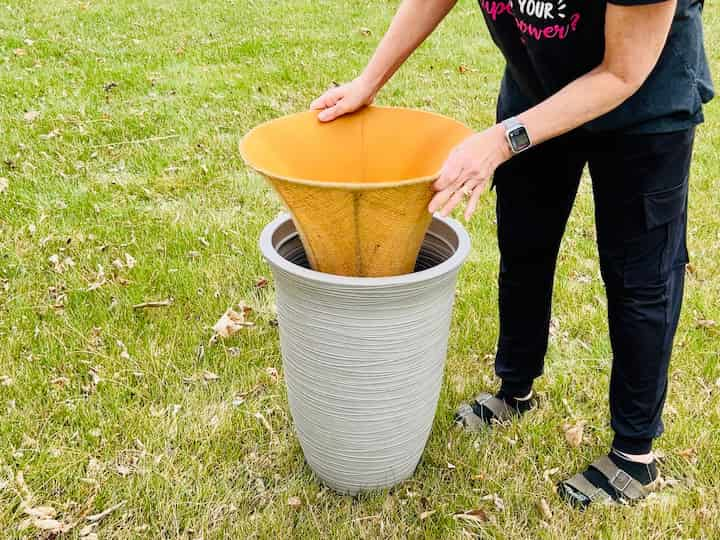
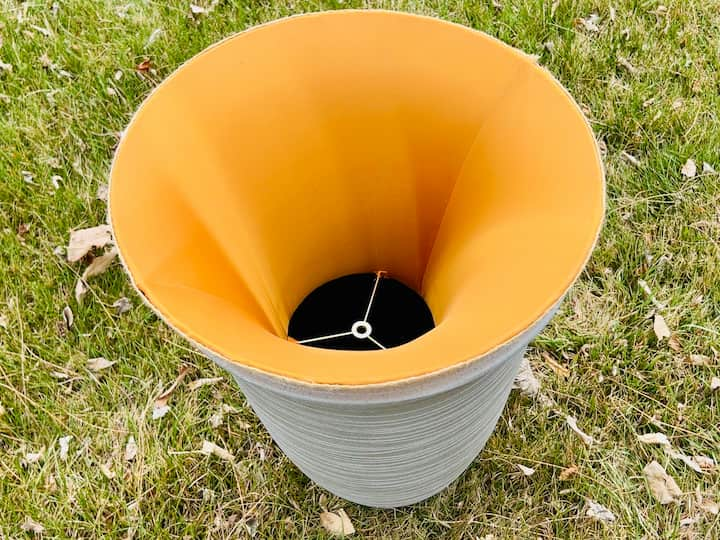
Use a lampshade frame as a filler
Another option would be to use an old lampshade. Now you could find one at the thrift store, you would strip the fabric off, find one that fits your planter’s size, flip it upside down, and place it into the planter. It would just be the frame of the lampshade and it would allow you to set a pot in there and then it would have the space underneath for drainage.
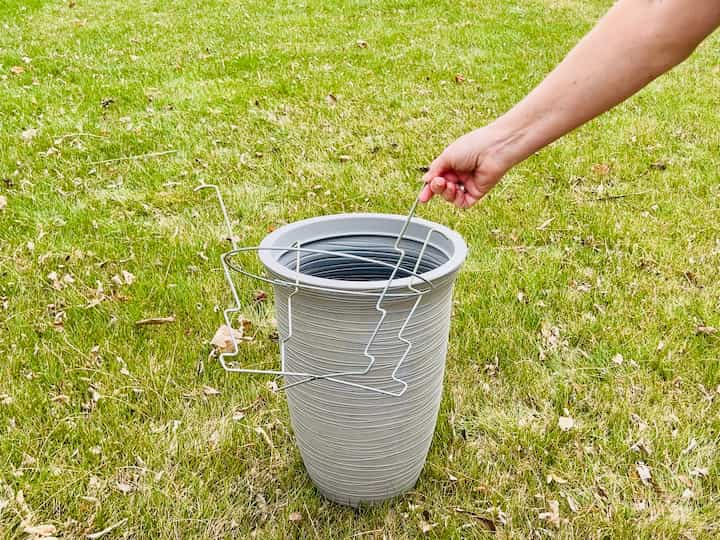
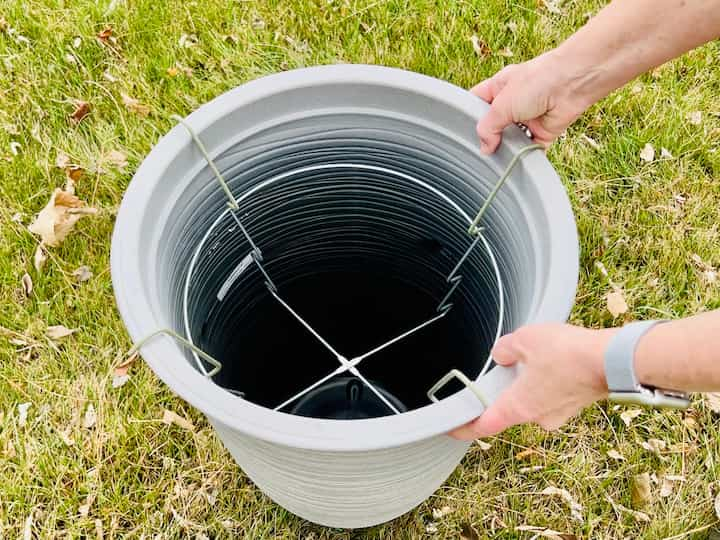
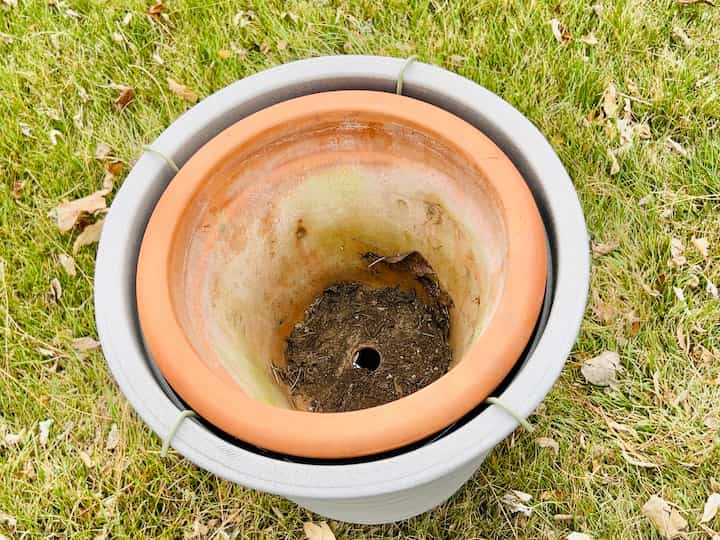
Use a DropnPlanter
You can also purchase a DropnPlanter. This drops right in your flowerpot and then you simply place a flowerpot inside of it and it leaves the bottom half empty so it makes it easy to move.
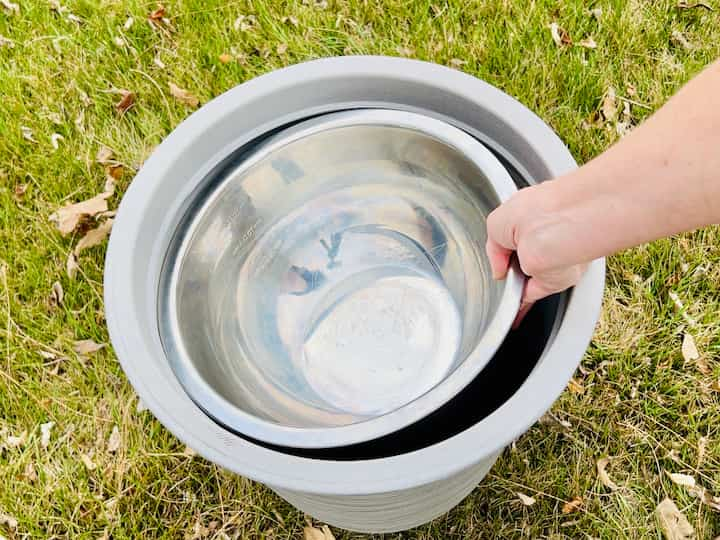
Use a bowl for filler savings
Another option might be to use a bowl, whether it’s plastic, stainless, or anything, but the problem with this is there wouldn’t be any drainage available.
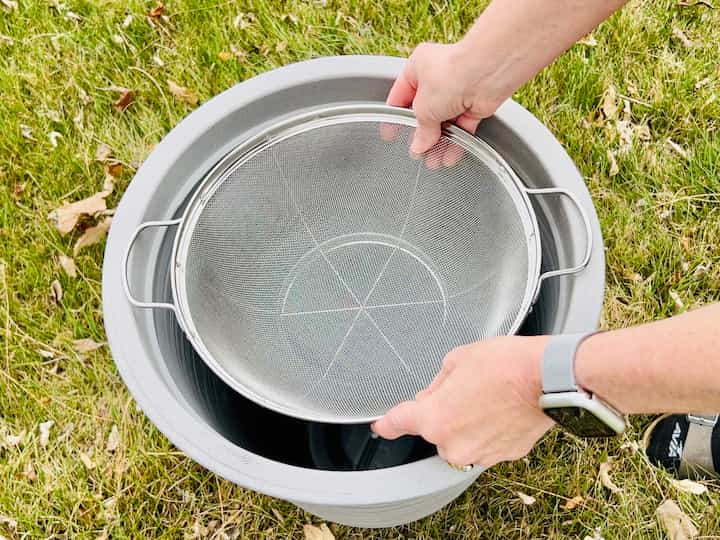
Use a Strainer for a budget friendly filler option
So what I like a little better than that is to find a strainer that is about the right size as your planter, place that in the top so that it sets right on top, and it allows for water to flow through when you’re planting.
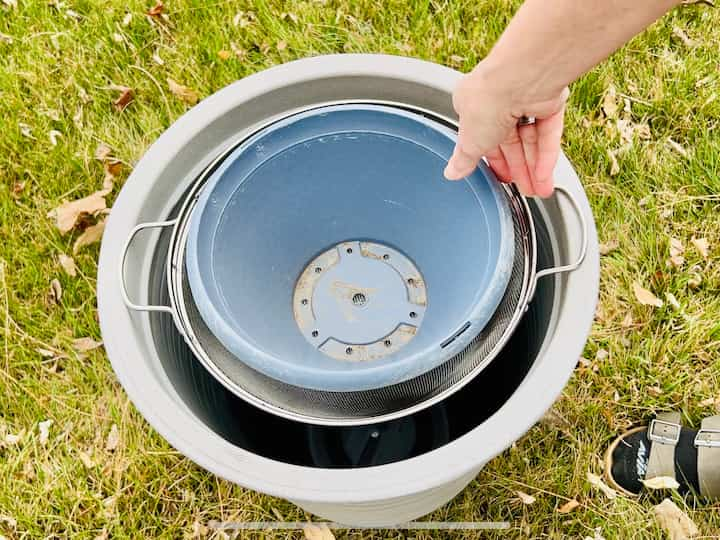

Now you can plant directly in the strainer or you can add a little flower pot to the top.
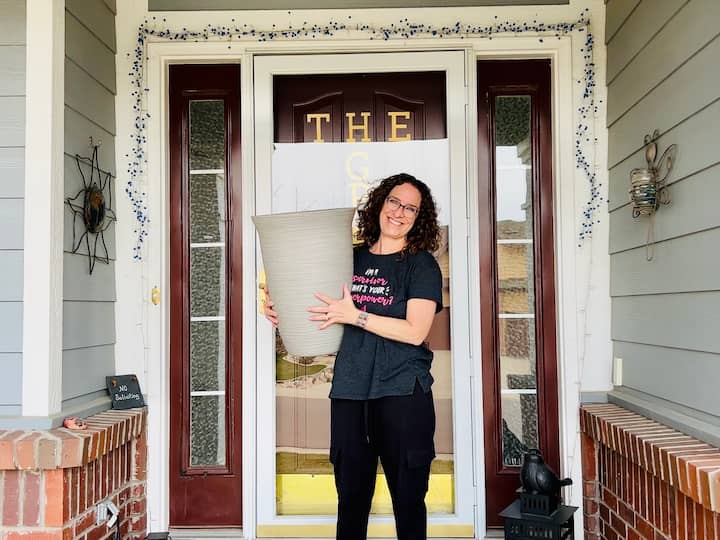
How To Fill A Large Planter, What I Picked
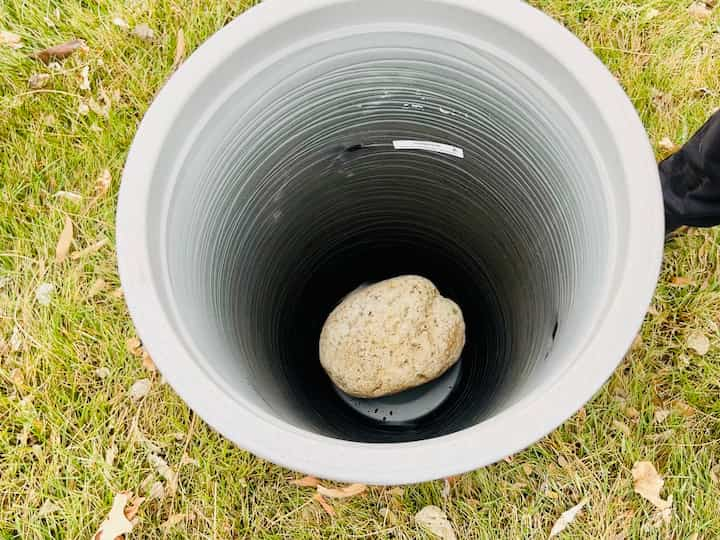
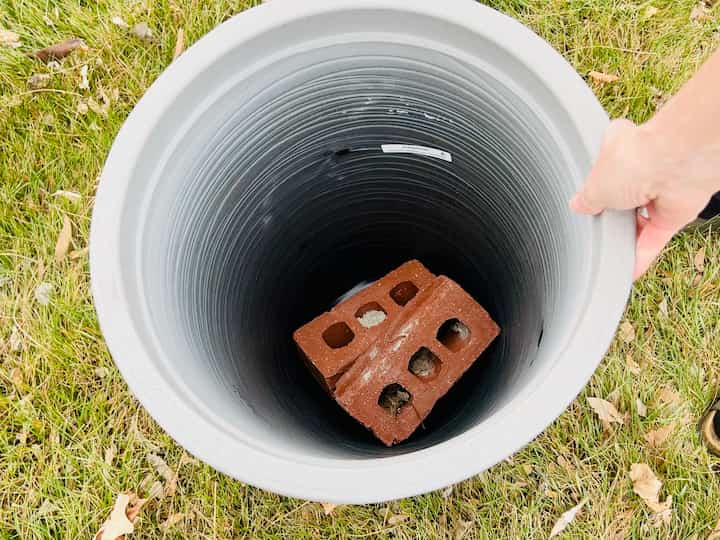
Weight the base of the planter
Now these taller flower pots may be lighter, but if wind, kids, pets come over, they’re going to knock right over. You can place a rock in the bottom or another option would be small rocks or just a couple of bricks. These little steps will help you keep your pot stable, but not make it too heavy.
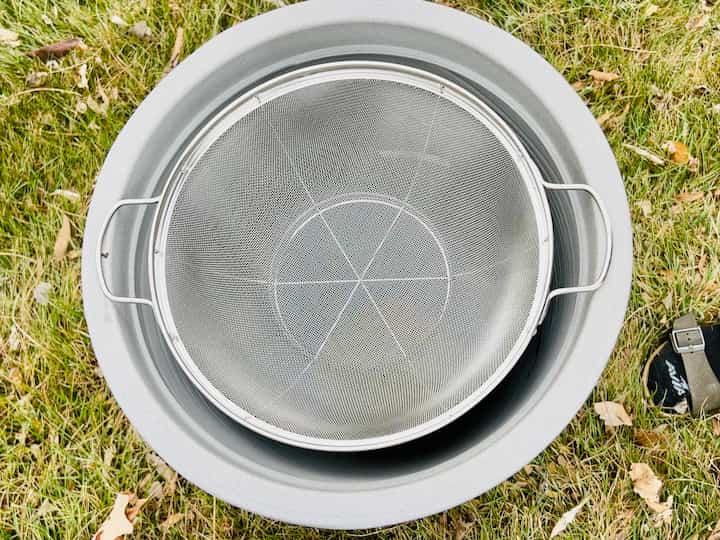
So here’s what I’m going to do. I’m going to place a rock in the bottom, and then I’m going to place my strainer or colander on top.

Add the planter insert for filler savings
I grabbed a smaller flower pot and I planted some flowers with some straw and dirt into it.
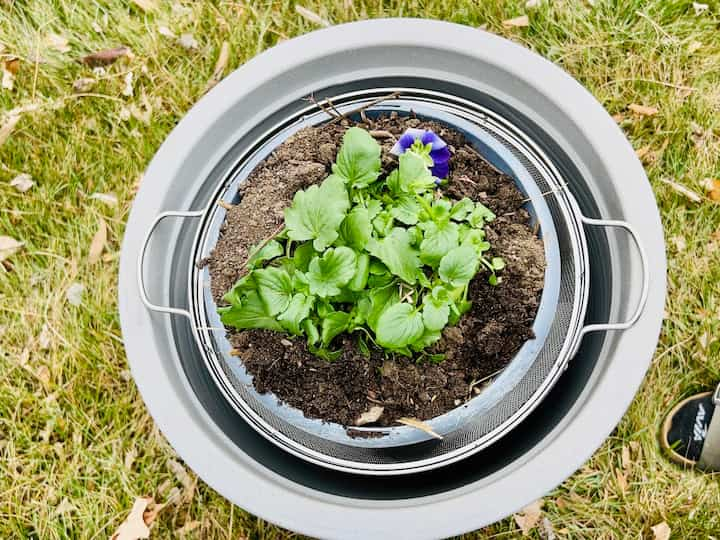
Add your plants
And then I placed the flower pot into the strainer. Now I might look for a little larger strainer and flower pot so it fills more of the space.
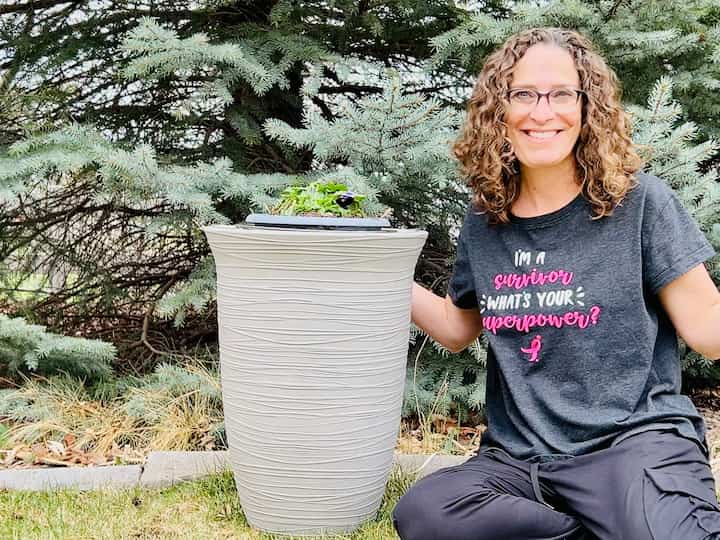
So no more super heavy flower pots. I can easily pick these up and carry them where I want them to go.
How To Fill Large Planters Video
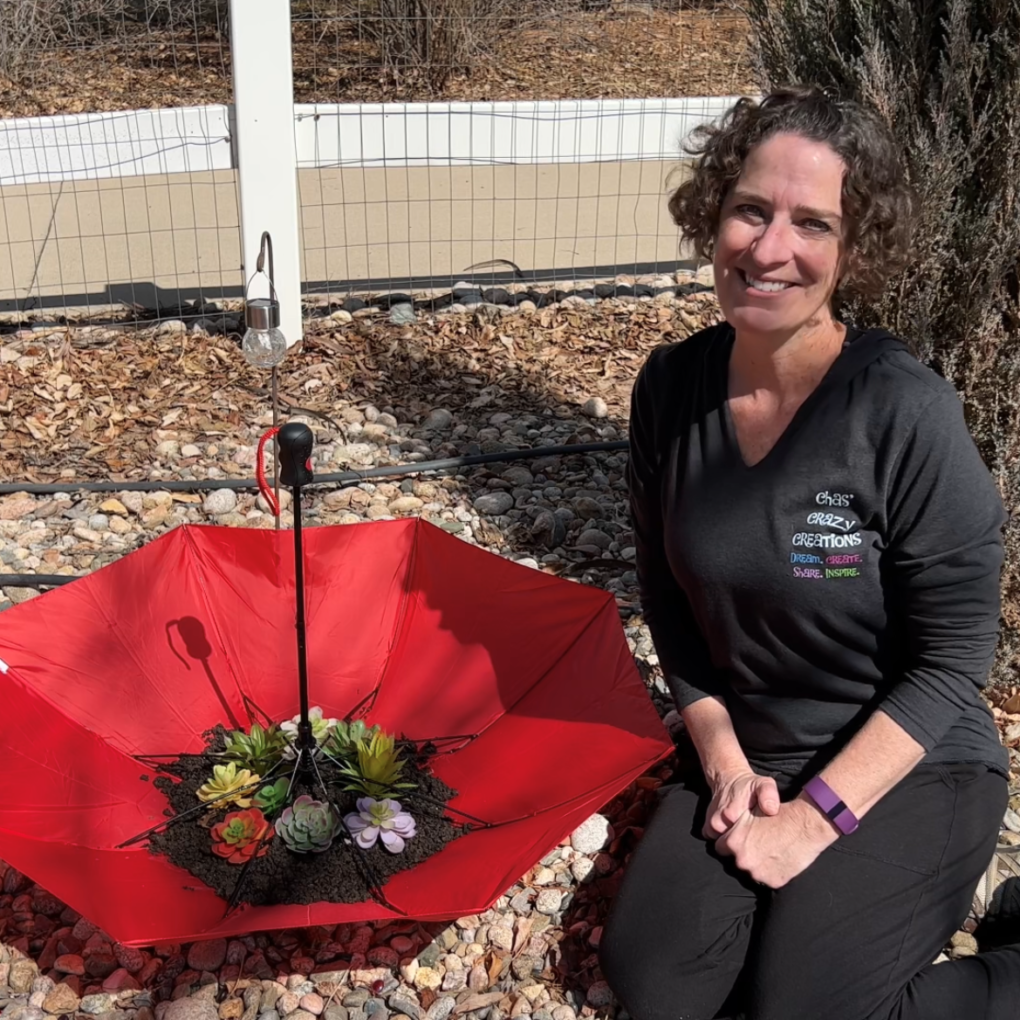
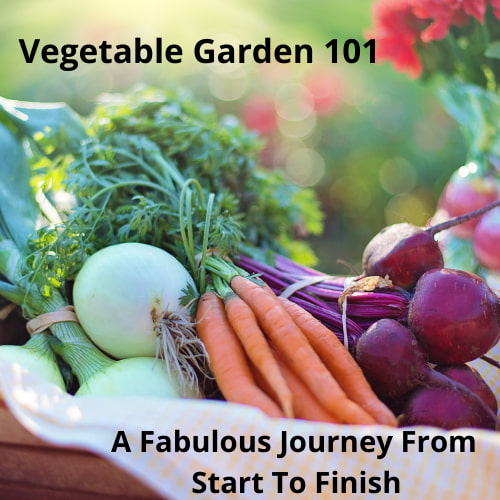
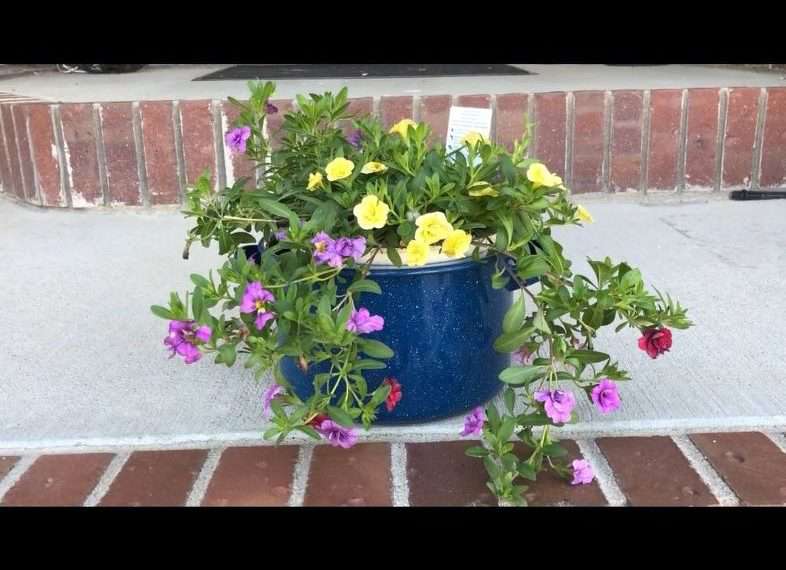
More Gardening Posts
- Easy DIY Flower Gardening for Beginners with Video
- Vegetable Garden 101 A Fabulous Journey From Start To Finish
- 11 Thrift Store Finds For Unique Planters
What Can I Use To Fill The Bottom Of A Large Planter? More Ideas
When it comes to filling planters, there are many options for using lightweight and inexpensive materials. One option is to use packing peanuts or Styrofoam blocks as a filler material. These materials are lightweight and do not add much weight to the planter, which is ideal for larger and heavier planters. However, they do not provide any nutritional value to the plants, so it is important to mix them with potting soil or compost to give the plants the necessary nutrients.
Another option for lightweight filler materials is using plastic pots or milk jugs. Simply fill the pot or jug with soil and place it upside down at the bottom of the large planter. This will provide ample space for the roots of the potted plant to grow while keeping the overall weight of the planter light.
For planters without drainage holes, it is important to add a drainage layer at the bottom of the planter. This can be done by adding a layer of gravel or clay pellets. These materials will allow water to drain through the soil and prevent root rot.
Using organic matter such as compost or kitchen scraps is another great way to fill planters. These materials are often available in bulk and are relatively inexpensive. They also provide essential nutrients to the plants and improve soil quality. Peat moss and coconut fiber are also great organic materials that can be used to fill planters.
When creating raised garden beds or seasonal planters, it is important to use natural materials such as twigs, leaves, grass clippings, and other debris. These materials will decompose over time, adding organic matter to the soil and improving soil structure. Lasagna gardening or hugelkultur are popular methods of using natural materials to create rich and fertile soil for planting.
In conclusion, there are many options for filling planters with lightweight and inexpensive materials. By using a combination of organic matter, filler materials, and drainage layers, it is possible to create a healthy and thriving garden without breaking the bank. Whether it’s using cardboard, fabric, or soda cans, there are always creative ways to reduce the number of heavy pot fillers like garden soil or topsoil and make gardening more accessible for everyone. Don’t hesitate to visit your local garden center and ask for advice on the best filler materials to use for your specific planting needs.

Cheapest Way To Fill Planters Q&A Section
There are a variety of materials that can be used to fill the bottom of a large planter. The main purpose of filling the bottom is to take up space and create a lightweight base for the soil to rest on, which helps to reduce the weight of the planter and provides better drainage for the plants.
One option is to use lightweight filler materials such as packing peanuts, styrofoam blocks, or milk jugs. These materials are cheap and readily available and can be placed at the bottom of the planter to fill up space. Another option is to use rocks, gravel, or broken pieces of pottery to create a drainage layer at the bottom of the planter. This can help prevent soil from becoming waterlogged and provide better drainage for the plant.
Some gardeners prefer to use natural materials such as twigs, branches, or wood chips as filler materials. These materials can help improve drainage and provide nutrients as they decompose. Another option is to use organic matter such as grass clippings, kitchen scraps, or compost as a filler. This can help provide nutrients for the plant and improve the overall health of the soil.
For raised garden beds or raised planters, some gardeners use the lasagna gardening method. This involves layering organic materials such as grass clippings, leaves, kitchen scraps, and cardboard to create a nutrient-rich base for the soil. Another method is the hugelkultur technique, which involves burying logs and branches at the bottom of the planter to create a long-lasting source of nutrients and improve drainage.
Ultimately, the choice of what to use to fill the bottom of a large planter depends on the needs of the plant and the gardener’s preferences. Local garden centers can provide advice on the best options for your specific situation.
Yes, adding some filler materials at the bottom of your planter can provide many benefits. First, it can help with drainage by preventing water from pooling at the bottom of the container, which can cause root rot and other plant problems. Second, it can make the planter lighter and easier to move around if you need to. Third, it can save you money on potting soil by reducing the amount needed to fill the container.
However, it’s important to choose the right materials for your planter. Don’t use materials that can break down too quickly or become compacted, as this can create drainage problems. Additionally, avoid using materials that can release harmful chemicals or toxins into the soil, as this can harm your plants.
In general, lightweight and non-toxic filler materials such as gravel, packing peanuts, wood chips, and styrofoam blocks can work well in the bottom of your planter. You can also consider using organic materials such as sphagnum moss, coconut fiber, or even kitchen scraps and garden debris, which will decompose over time and add nutrients to the soil.
Ultimately, the choice of what to use will depend on your preferences and the specific needs of your plants. If you’re unsure, consult with a local gardening expert or the staff at your nearest garden center for advice.
Using Styrofoam in the bottom of a planter is a common practice to reduce the weight and amount of soil needed, but it has its pros and cons. On the one hand, Styrofoam is lightweight and can help with drainage, making it a good option for large planters. On the other hand, it is not an environmentally friendly material and can break down over time, potentially harming the plant’s roots.
If you decide to use Styrofoam in the bottom of your planter, make sure to use it in moderation and use it along with other filler materials like wood chips, packing peanuts, or rocks to reduce the impact of its decomposition. Additionally, it’s important to ensure that your planter has proper drainage holes to prevent waterlogging, which can harm the roots of your plants.
Start by covering the drainage hole(s) with a piece of fabric or a coffee filter. This will prevent soil from washing out of the hole while still allowing water to drain through.
Add a layer of lightweight filler materials, such as packing peanuts, milk jugs, or soda cans, to the bottom of the planter. This will help to create air pockets and improve drainage.
Next, add a layer of coarse gravel or small rocks on top of the filler materials. This will help to prevent the soil from washing down into the drainage layer.
If you want to create a more natural drainage layer, you can add a layer of clay or wood chips on top of the filler materials instead of using gravel.
Finally, add a layer of sphagnum moss or a barrier of fabric over the drainage layer. This will help to prevent the soil from mixing with the drainage layer while still allowing water to flow freely.
By following these steps, you can create a well-draining planter that will provide the necessary drainage for your plants.
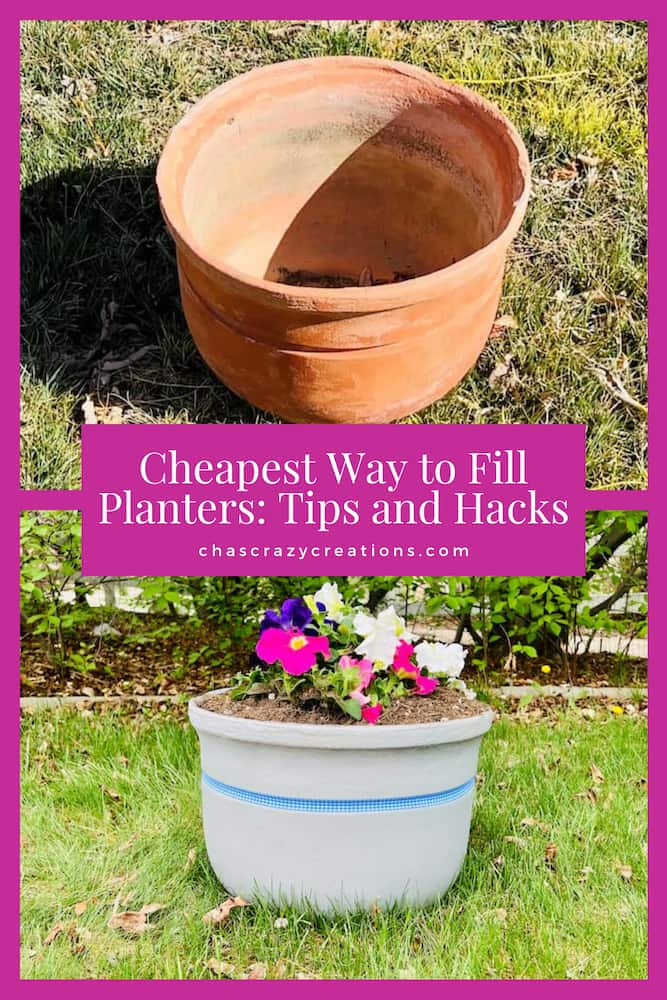
We hope this tutorial has inspired you to try some of these large pot filler hacks on your own. If you want more home improvement tips, be sure to subscribe to our YouTube channel and blog. Thanks for watching, and don’t forget to like, share, and subscribe!

